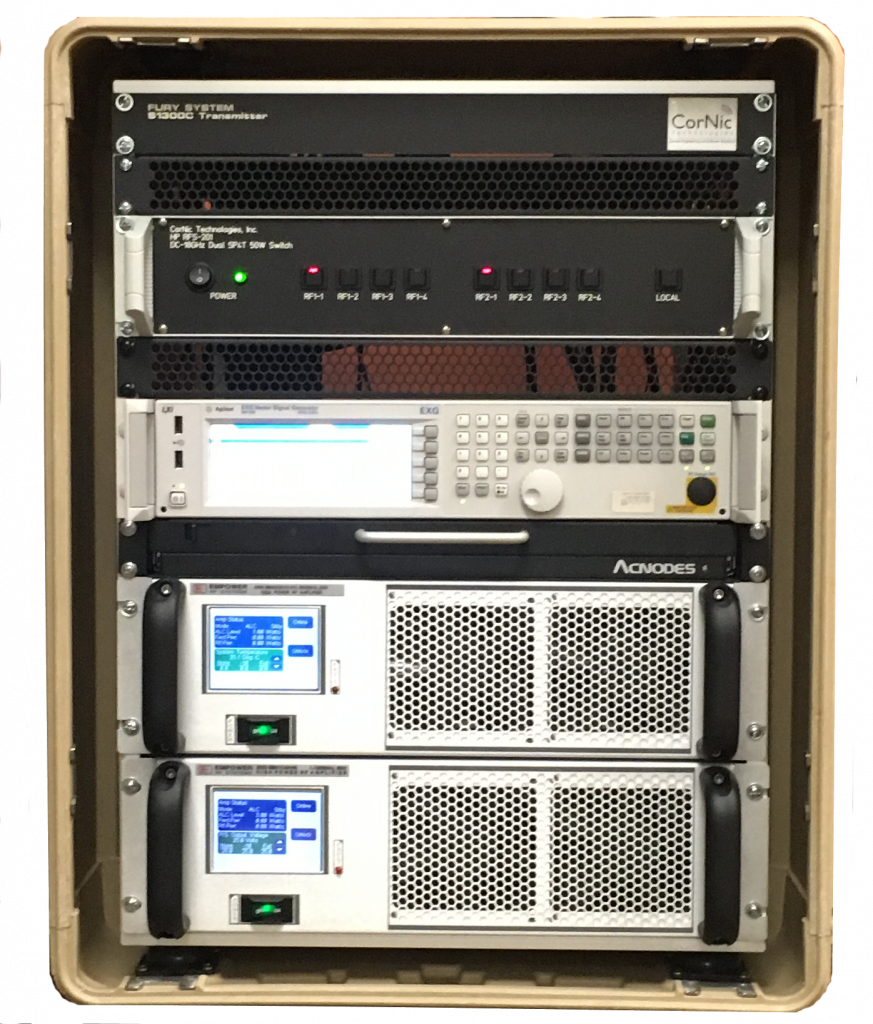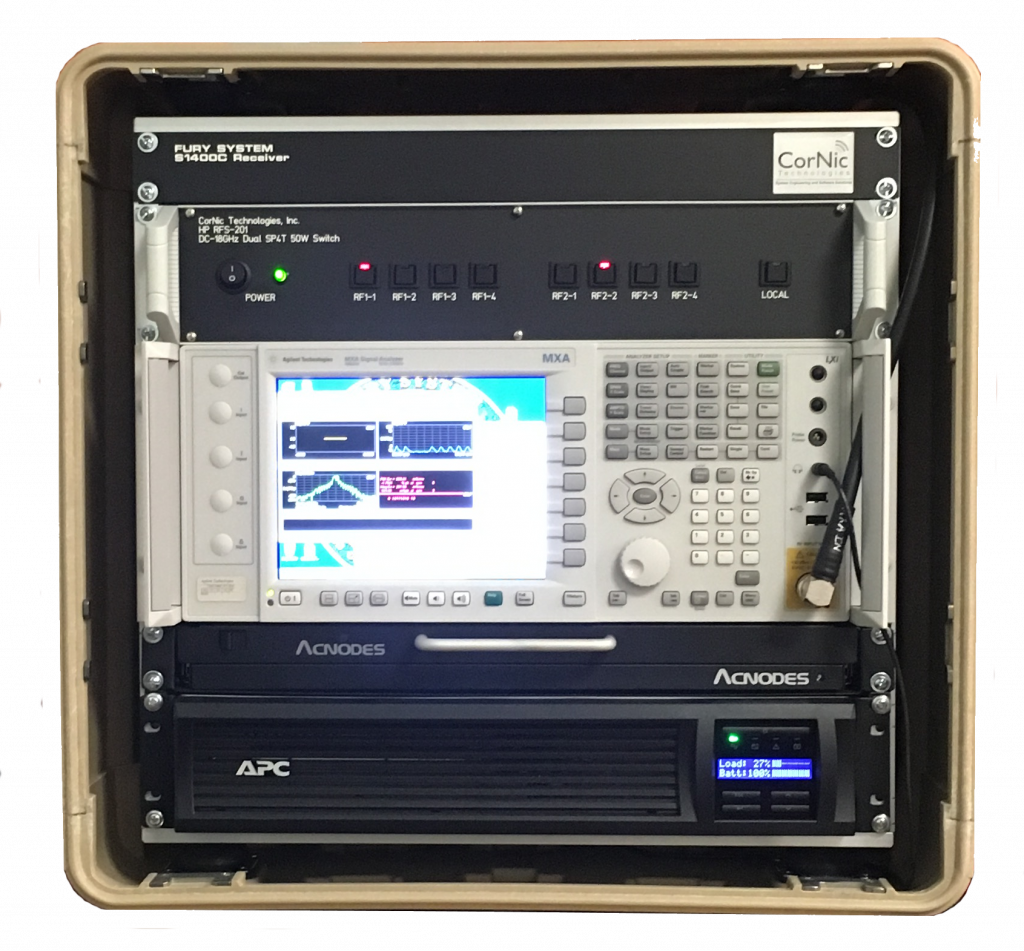The FURY system provides a means for easily generating (transmitting and receiving) standard and non-standard simulated digital, and analog communications signals, establishing a structure for the testing, measuring, and training of EW/IW capabilities. FURY has been designed to generate, transmit, receive, and analyze the quality of reception of digitally modulated signals (i.e., simulated GSM, 802.11, V.21 to name just a few), automated with an application specific System Operation Console (SOC) software program (FURY.exe). The FURY architecture supports signal transmission and reception from any number of configured transmitter/receiver sites within the system.
FURY supports three primary types of operation modes:


- Transmitter-to-Receiver Modes – These modes of operation simulate a communications radio link, providing training in the interception and identification of the transmitter side of the link, along with denial of the receiver side of the link. These are the most common usage modes of the FURY system, stimulating stand-off denial systems and measuring their ability to deny the FURY simulated communication link in real-time.
- Transmit Only Modes – These modes of operation control only the transmitter side assets in the FURY system, providing training in the interception and identification of threat emitters, and the capability of generating jamming and spoofing signals.
- Receive Only Modes – These modes of operation control only the receiver side assets in the FURY system, providing the ability to perform targeted signal analysis and general spectrum measurements.
The FURY SOC is the controlling component for the overall FURY system, designed to provide simple control of the rather complex transmit receive site hardware sub-systems. The FURY SOC is comprised of a Windows 10 (or later) operating system-based PC platform and the FURY SOC software. The FURY SOC application works in conjunction with both the FURY Transmit Site Control Server (TSCS) and the FURY Receive Site Control Server (RSCS) applications (both separate from the SOC application); communication between these components is realized through TCP/IP socket connectivity (wired or wireless). The TSCS manages the control of the transmit site RF signal generator, the high-power RF switch, the high-power RF amplifier unit(s), the GPS receiver mouse (optional), and any special purpose hardware designed into the FURY system. The RSCS manages the control of the receive site RF signal analyzer, the high-power RF switch (optional), the analog (AM/FM) receiver (optional), and the GPS receiver mouse (optional).
Configuration of the FURY system (hardware and software) can be changed in the field (via the SOC operator) through an easy-to-use graphical user interface (GUI) settings window within the SOC application. This allows some operational aspects, the signaling capability, and the network (transmit and receive site) topology to be changed without intervention of CorNic Technologies. In addition to utilizing the SOC GUI configuration tool, the SOC software and hardware parameters can easily be changed through direct editing if the various settings files that FURY utilizes.

